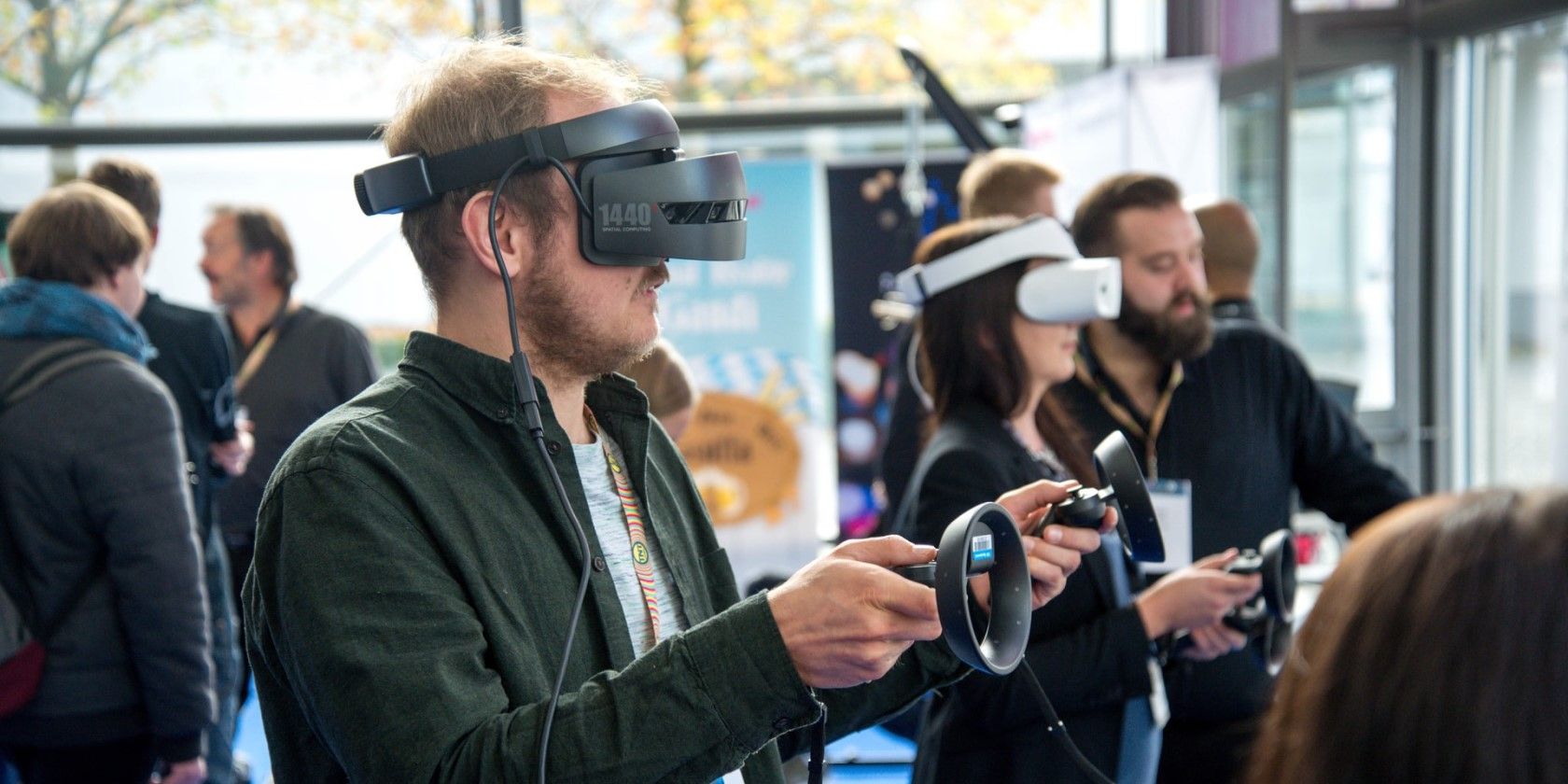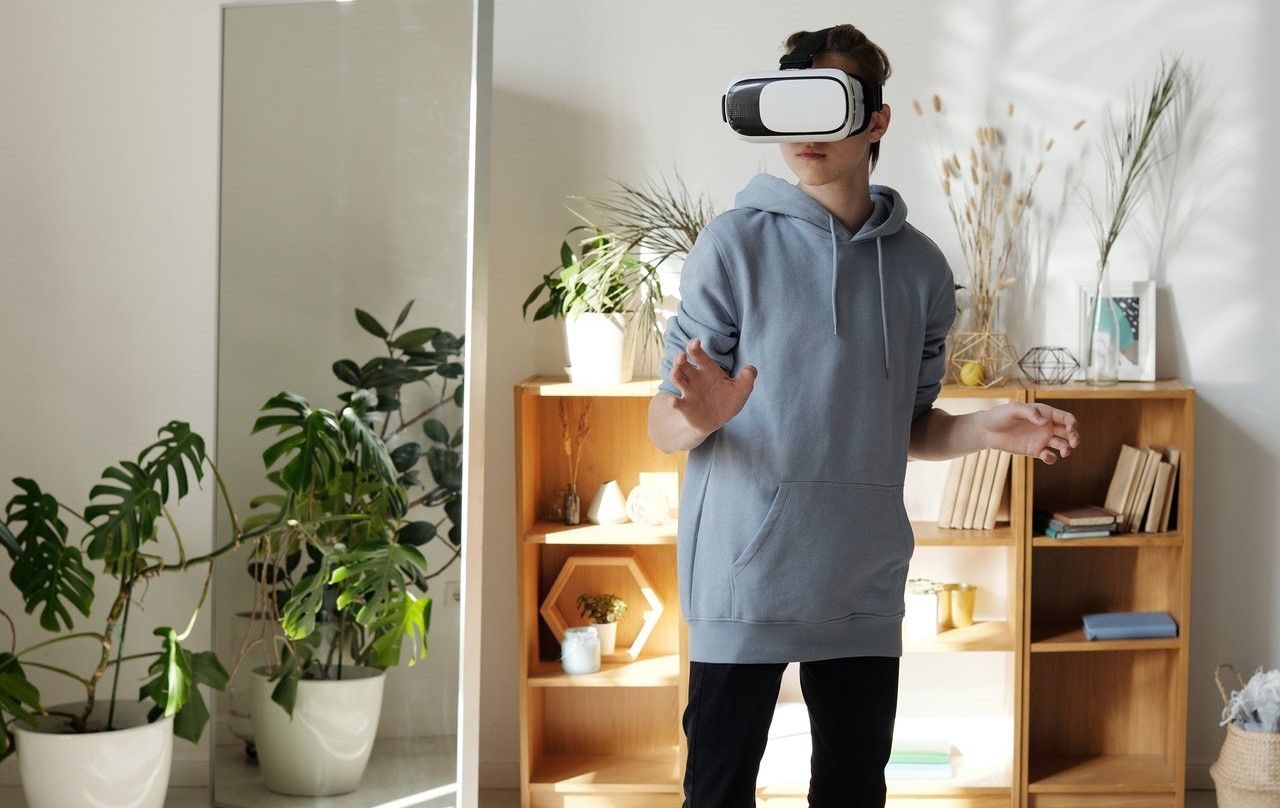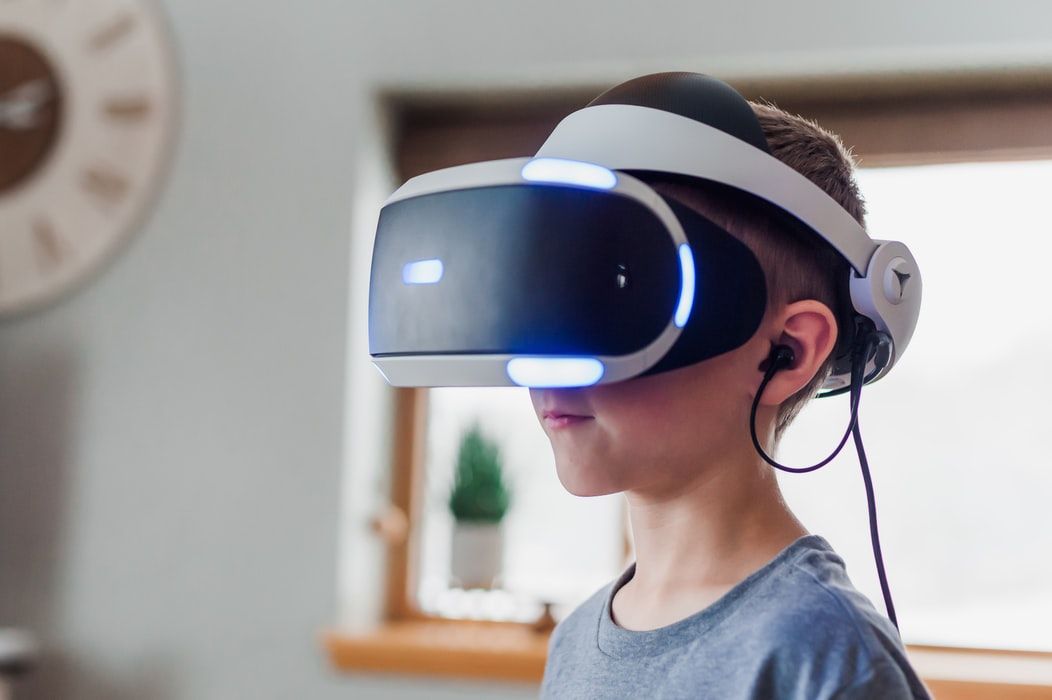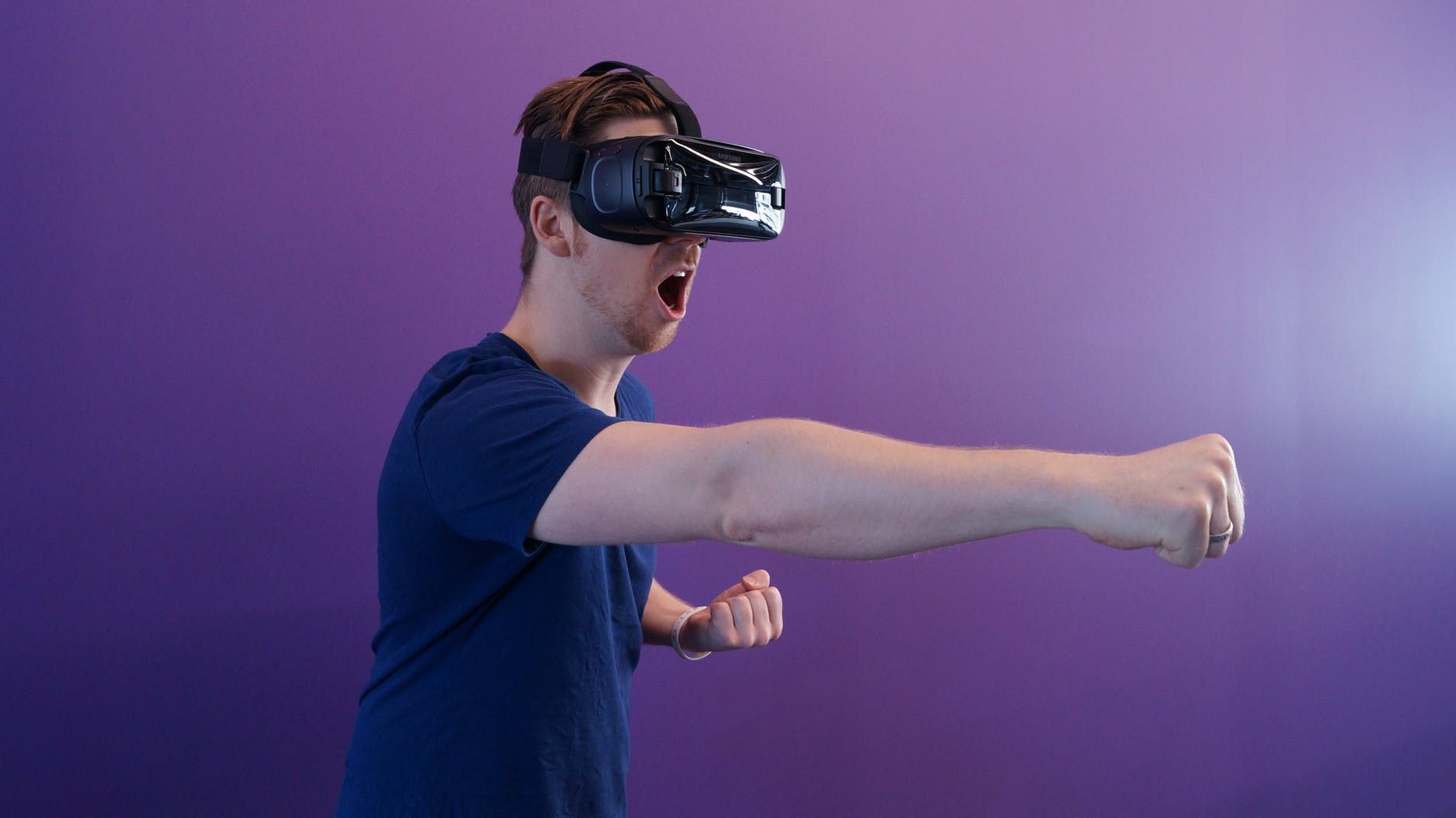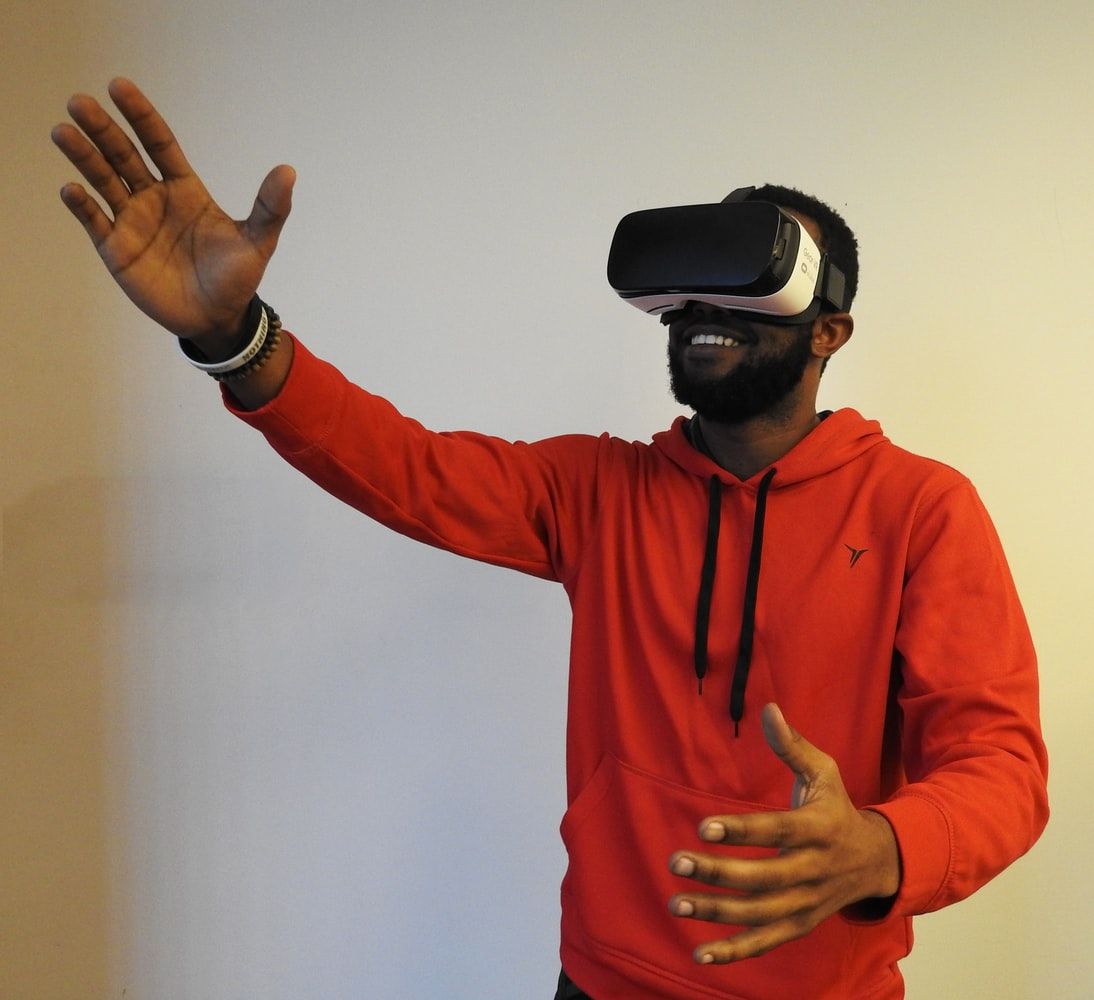Interactive storytelling has been a popular choice in gaming for forever. And we’ve seen the gaming industry do anything and everything to draw players into the games and worlds they create.
VR (virtual reality) is the next level of immersion in video games. VR offers something special. Instead of just playing as some nameless, faceless protagonist, it allows you to be the protagonist.
In this article we explain the basics of VR gaming, helping absolute beginners get started.
Room Scale VR vs. Seated/Standing VR
To start with, there are two main types of VR; seated/standing and room-scale VR. And here are the differences between them...
An Introduction to Room Scale VR
Room-scale VR is a virtual reality experience that takes advantage of your entire play space. Instead of being in one area or one position as you would be when gaming on a controller or when seated, room-scale allows you to move around and interact with your environment.
The physical motion of your body combined with what you see in the headset creates a level of immersion that’s almost unmatched. Each VR headset has its own guidelines for how much space is necessary to play.
However, while room-scale does require both setup and testing to ensure a great experience, the payoff is worth it. When your hand moves in real life, it moves in-game. When you pull the trigger of your controller, a bullet fires in the game.
Compared to seated or standing implementations, room-scale VR is arguably more immersive because of the freedom it allows the player to experience.
Pros
- One of the most immersive gaming experiences you can have.
- Complete freedom of movement and motion inside your play space.
- Improved gameplay responsiveness due to motion tracking.
Cons
- Room-scale can be physically tiring if you’re playing an intensive game.
- Can be dangerous if you’re too immersed in your game and step outside of the play space boundaries.
An Introduction to Seated/Standing VR
Seated or standing virtual reality allows you to experience the joys of virtual reality with less physical exhaustion. There are some virtual reality or augmented reality games that have you jumping up and down, running from side to side, and violently swinging your arms left and right to defend against oncoming attacks.
Seated or standing VR eliminates most of that movement. Instead of using your legs to physically move you from one location to another, your movement in the game is generated by controller usage.
Every VR headset has controllers that are unique to it and each controller allows you to use buttons or triggers to move from one location to another. Some controllers have built-in joysticks that you can push in the direction you want to move, which will simulate a walking experience. This is known as smooth motion.
Smooth motion is only recommended for gamers that are able to handle using VR for extended periods of time without experiencing motion sickness. Some games and headsets allow for teleportation movement where your character will teleport from one area to another instantly. This type of movement was designed for people who experience motion sickness and can’t handle a large amount of movement on-screen at any one time.
Pros
- Seated VR allows for people with physical disabilities to experience VR gaming in a way they’d never have been able to before.
- Less tiring to use than room-scale VR.
- Doesn’t need as much space as room-scale VR.
- Cheaper than room-scale VR because you don’t need to buy extra sensors to make your setup work efficiently.
- Safer to use than room scale because you aren’t moving around.
Cons
- Less immersive than room-scale VR.
- Some games only have a room-scale option so you’ll be missing out if you choose to only play in seated or standing mode.
What You'll Need for VR Gaming
Now that you know the differences between room-scale VR and seated/standing VR, we can move on to what else you'll need to get started with VR gaming.
To experience VR to its fullest, you’ll need a number of things. There are three main types of VR headsets: console, PC, and mobile.
Console
The only consoles that boast a VR headset are the PlayStation 4/PlayStation 5. So, to experience console VR, you’ll have to buy a PS4 or PS5 and a corresponding PlayStation VR headset. Some stores have a PlayStation VR bundle that will also come with the PlayStation Camera and the PlayStation Move controllers. However, they are also sold separately.
PC
There are many different types of VR headsets available on PC. Some only offer room-scale VR, while others offer a combination of seated, room-scale, and standing VR. After choosing which type of VR you’d like to experience, you’ll have to purchase your VR headset accordingly, but you’ll also need a computer capable of running it.
Some VR headsets have even gone cordless and connect to your computer directly through the HDMI or DisplayPort output. However, these VR headsets require powerful hardware to run.
VR headsets are also recommended to run at a minimum of 90 frames per second to prevent motion sickness. Some headsets cap their frame rates at 75 and allow for experimental frame rates of 90 fps depending on the developer. It’s recommended that games run at upwards of 90 to 120 frames per second for the smoothest experience possible.
Something else to keep in mind is the resolution your headset is capable of showing. Every headset does things differently. Some headsets are like TVs that have a single display that both of your eyes stare at.
Other headsets have a display for each eye, and depending on the display you have, your resolution will vary. Some VR headsets output at 1080p, while others, such as the Pimax 5K Plus, offer 8K visuals. You'll have to check the manufacturer’s website for the recommended system specifications to make sure that your computer is powerful enough to use the headset you want to buy.
Making an expensive purchase of a headset only to find out that you'll be sick every time you use it because your graphics card isn’t strong enough to handle VR is never a good feeling.
Mobile
To experience VR on mobile you’ll need to find a headset capable of VR that’s compatible with your phone and powerful enough to handle VR gaming. You’ll also need to take into account things like screen resolution and battery life to ensure you can get the best performance possible.
How Much Space Will You Need?
The amount of space necessary for VR gaming varies. The manufacturer of your headset of choice will be able to give you the best estimation of how much space you’ll need. Every manufacturer gives different specifications due to their different tracking methods and sensor placements. However, the norm is about 2 meters by 1.5 meters of space.
How Much Money Will You Need to Spend?
VR gaming is expensive, there’s no question about it. So expensive in fact that most PC manufacturers that sell pre-built machines now have entire lines of “VR Ready PCs” to try and help people cut down on the cost of getting into VR gaming.
On average, you’ll be spending $800 to $1000 for a PC capable of playing games in VR and between $300 and $1000 dollars for a headset. Sometimes more, depending on the headset you buy and the accessories you purchase, such as additional sensors that detect your body and movement.
Advice for People Starting Out With VR
The best thing to do when starting with VR is to take it slowly. It can be an amazing feeling climbing mountains, soaring above the highest peaks in the world, or engaging in heated firefights.
But remember that VR gaming can be physically tiring and it can even make you sick if you try to do too much too quickly. Some people have to adjust to VR over time because they suffer from motion sickness and can’t handle sudden violent motion or the intensity that VR can present.
VR can be taxing for people with eye conditions, and you'll be required to take a break, or risk being sick. However, once you’ve gotten adjusted and you can play for long periods of time, you’ll find that there’s nothing in the world like a good VR experience.
Whether you’re racing, shooting, or climbing, VR allows you to experience gaming in a way that simply has to be seen to be believed.

